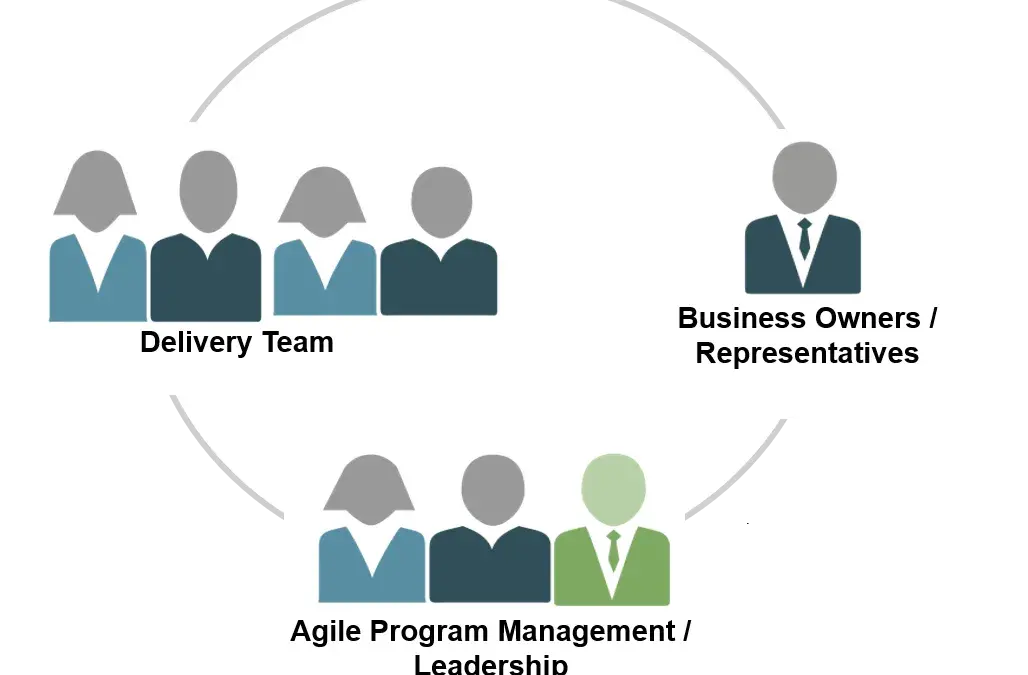Over the last several years of my Agile coaching experience, I have been asked many times about how governance works with Agile and what metrics should management use to ensure the “appropriate” level of governance. While I must admit that I often used to wonder why these should be such difficult questions, I also realized it was a genuine concern. The reason being that most managers and senior leadership in organizations are used to a certain style of planning, monitoring and control of projects and programs and are left wondering how agile or scrum would deal with them.
I look at governance in a somewhat simplistic way. The key question is about what are we trying to achieve at these different levels and how using an agile approach helps in the process. To me the key elements of effective governance are the following:
- Ensuring creation of business value and delivery alignment with business goals
- Accountability, ownership, participation at different levels
- Transparency in communication, decision making etc.
- Simplicity of approach with minimal interventions / escalations to achieve required goals
When I look at a team or project level, an approach like Scrum implements these elements thru the following:
- Business participation and involvement at a release / overall project level through an exercise such as release planning and subsequent refinements through backlog refinement sessions
- Team involvement in release planning, backlog refinement and sprint reviews, ensures participation and ownership / accountability for commitments and delivery alignment with business
- Effective use of daily stand-ups, task boards and burndowns and events like retrospectives ensures transparency in communication and decision making
- Finally, simplicity as a principle is built into most scrum events and practices; self-organizing teams ensure decisions are taken at their level most of the time with minimal escalations.
At a program and portfolio level, many organizations implement scaling approaches such as SAFe which is very well structured with well-defined roles, practices as well as an overall governance mechanism. However, even without that, basic practices such as Scrum of Scrum at different levels could ensure effective collaboration for delivery alignment with business goals, planning and managing dependencies, and decision making at the appropriate levels.
So, if all of these are in place, what role does management and leadership play in project or program governance? Are there reviews needed at higher levels of management from delivery or other perspectives? If so, what exactly should these reviews cover?
I look at the role of management / leadership from a governance perspective in two parts. This is, of course, in addition to the support in dealing with external pressures such as technology driven innovation, competition, regulatory requirements and so on.
- For overall product or service delivery, what are issues that need to be addressed that are blocking or preventing teams from achieving their commitments and goals? Is there the required level of autonomy at an individual team level and collaboration across teams?
- What is the value add that management can provide to improve delivery capability? What metrics do they need to look at to provide this value add?
Let’s take a few examples to illustrate the role of management in effective governance:
- Reviewing progress during sprint through burndowns and burnups is the job of the team and not the management. Same is the case with velocities and trends. The management’s focus should be to understand the team’s analyses of these data and how the team intends to address issues, if any, and finally the support the team needs from the management to address issues.
- Two examples of competence required at a team level relate to predictability in meeting commitments and ensuring high quality delivery on a continual basis. The focus of the management reviews should be on metrics relating to these – for example, are say/do ratios across several sprints showing consistency and improvements? Are hardening cycles and effort coming down? What is the analysis of the team with respect to these and what do they expect from management in terms of support for these?
- At a program level, ability to meet overall commitments will depend on the outputs of many teams. So, one of the aspects that management reviews needs to address, is the ability of each individual team to meet their commitments and the combined ability of all teams to meet overall program level commitments. To give a specific example – your program may have three more sprints to go before the release date – one team may require four sprints to complete their commitments based on their current velocity trends while another team may just require two sprints to complete their commitments so a (re-)distribution of load across these teams may help to minimize program level risks in this case.
In essence, management needs to focus on providing the required environment and capability for teams and programs to succeed and their reviews should be to support this cause.




